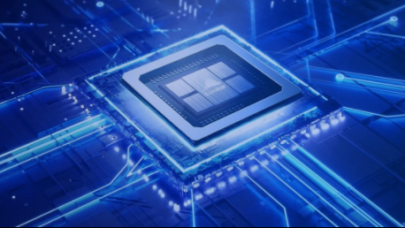
Intel’s Strategy to Free Server Capacity by Pushing AI Inference to PCs
January 18, 2024
AI is here to stay and is becoming a larger part of the workload processed on servers and PCs. That's why Nvidia is seeing success as a chipmaker, and there is excitement around large language models such as Meta's open-source Llama. An eager audience wants to get a handle on such models... Read more…

The New Velocity Bench for GPU Offload Performance Data
July 9, 2023
Performance benchmarking is the hallmark of HPC. One need to look no further than the Top500 list which has been recording HPC performance since 1993. Historica Read more…

State of SYCL – ECP BOF Showcases Progress and Performance
February 28, 2023
Enabling interoperability across U.S. exascale supercomputers is one of the chief goals for the U.S. Exascale Computing Project (ECP), which has broadly oversee Read more…

15 Slides on Right and Wrong Ways to Program GPU-based US Leadership Supercomputers
March 2, 2022
U.S. leadership computers today are giant GPU-based machines, whether you’re talking about the pre-exascale Summit supercomputer in operation today at the Oak Read more…

Why SYCL: Elephants in the SYCL Room
February 3, 2022
Commentary -- In the second of a series of guest posts on heterogeneous computing, James Reinders, who returned to Intel last year after a short “retirement, Read more…

Solving Heterogeneous Programming Challenges with SYCL
December 8, 2021
In the first of a series of guest posts on heterogenous computing, James Reinders, who returned to Intel last year after a short “retirement,” considers how SYCL will contribute to a heterogeneous future for C++. Reinders digs into SYCL from multiple angles... Read more…

SYCL 2020 Launches with New Name, New Features, and High Ambition
February 9, 2021
The Khronos Group today formally launched SYCL 2020, the parallel programming framework based on IS0 standard C++ that has been gaining traction in HPC and will Read more…

15 Slides on Programming Aurora and Exascale Systems
May 7, 2020
Sometime in 2021, Aurora, the first planned U.S. exascale system, is scheduled to be fired up at Argonne National Laboratory. Cray (now HPE) and Intel are the k Read more…

- Click Here for More Headlines

Whitepaper
Transforming Industrial and Automotive Manufacturing
In this era, expansion in digital infrastructure capacity is inevitable. Parallel to this, climate change consciousness is also rising, making sustainability a mandatory part of the organization’s functioning. As computing workloads such as AI and HPC continue to surge, so does the energy consumption, posing environmental woes. IT departments within organizations have a crucial role in combating this challenge. They can significantly drive sustainable practices by influencing newer technologies and process adoption that aid in mitigating the effects of climate change.
While buying more sustainable IT solutions is an option, partnering with IT solutions providers, such and Lenovo and Intel, who are committed to sustainability and aiding customers in executing sustainability strategies is likely to be more impactful.
Learn how Lenovo and Intel, through their partnership, are strongly positioned to address this need with their innovations driving energy efficiency and environmental stewardship.
Download Now
Sponsored by Lenovo
Whitepaper
How Direct Liquid Cooling Improves Data Center Energy Efficiency
Data centers are experiencing increasing power consumption, space constraints and cooling demands due to the unprecedented computing power required by today’s chips and servers. HVAC cooling systems consume approximately 40% of a data center’s electricity. These systems traditionally use air conditioning, air handling and fans to cool the data center facility and IT equipment, ultimately resulting in high energy consumption and high carbon emissions. Data centers are moving to direct liquid cooled (DLC) systems to improve cooling efficiency thus lowering their PUE, operating expenses (OPEX) and carbon footprint.
This paper describes how CoolIT Systems (CoolIT) meets the need for improved energy efficiency in data centers and includes case studies that show how CoolIT’s DLC solutions improve energy efficiency, increase rack density, lower OPEX, and enable sustainability programs. CoolIT is the global market and innovation leader in scalable DLC solutions for the world’s most demanding computing environments. CoolIT’s end-to-end solutions meet the rising demand in cooling and the rising demand for energy efficiency.
Download Now
Sponsored by CoolIT
Advanced Scale Career Development & Workforce Enhancement Center
Featured Advanced Scale Jobs:
HPCwire Resource Library
HPCwire Product Showcase
© 2024 HPCwire. All Rights Reserved. A Tabor Communications Publication
HPCwire is a registered trademark of Tabor Communications, Inc. Use of this site is governed by our Terms of Use and Privacy Policy.
Reproduction in whole or in part in any form or medium without express written permission of Tabor Communications, Inc. is prohibited.
























